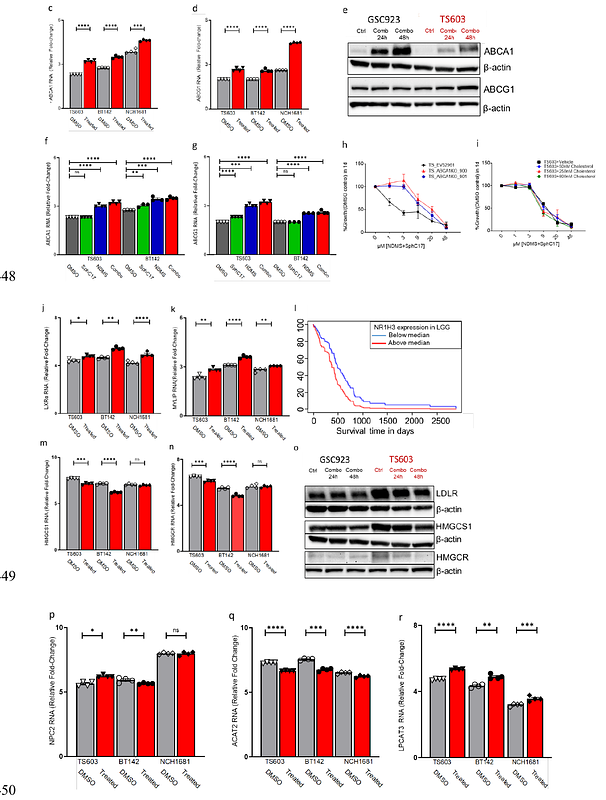Targeting the sphingolipid rheostat in IDH1mut glioma alters cholesterol homeostasis and triggers apoptosis via membrane degradation

Targeting the sphingolipid rheostat in IDH1mut glioma alters cholesterol homeostasis and triggers apoptosis via membrane degradation
Larion, M.; Dowdy, T.; Muley Vilamu, H.; Lita, A.; Li, A.; Yamasaki, T.; Zhang, L.; Chari, R.; Song, H.; Zhang, M.; Zhang, W.; Briceno, N.; Davis, D.; Gilbert, M. R.
AbstractThe cross-regulation of metabolism and trafficking is not well understood for the vital sphingolipids and cholesterol constituents of cellular compartments. While reports are starting to surface on how sphingolipids like sphingomyelin (SM) dysregulate cholesterol levels in different cellular compartments (Jiang et al., 2022), limited research is available on the mechanisms driving the relationship between sphingolipids and cholesterol homeostasis, or its biological implications. Previously, we have identified sphingolipid metabolism as a unique vulnerability for IDH1mut gliomas via a rational drug design. Herein, we show how modulating sphingolipid levels affects cholesterol homeostasis in brain tumors. However, we unexpectedly discovered for the first time that C17 sphingosine and NDMS addition to cancer cells alters cholesterol homeostasis by impacting its cellular synthesis, uptake, and efflux leading to a net decrease in cholesterol levels and inducing apoptosis. Our results reflect a reverse correlation between the levels of sphingosines, NDMS, and unesterified, free cholesterol in the cells. We show that increasing sphingosine and NDMS (a sphingosine analog) levels alter not only the trafficking of cholesterol between membranes but also the efflux and synthesis of cholesterol. We also demonstrate that despite the effort to remove free cholesterol by ABCA1-mediated efflux or by suppressing machinery for the influx (LDLR) and biosynthetic pathway (HMGCR), apoptosis is inevitable for IDH1mut glioma cells. This is the first study that shows how altering sphingosine levels directly affects cholesterol homeostasis in cancer cells and can be used to manipulate this relationship to induce apoptosis in IDH1mut gliomas.
